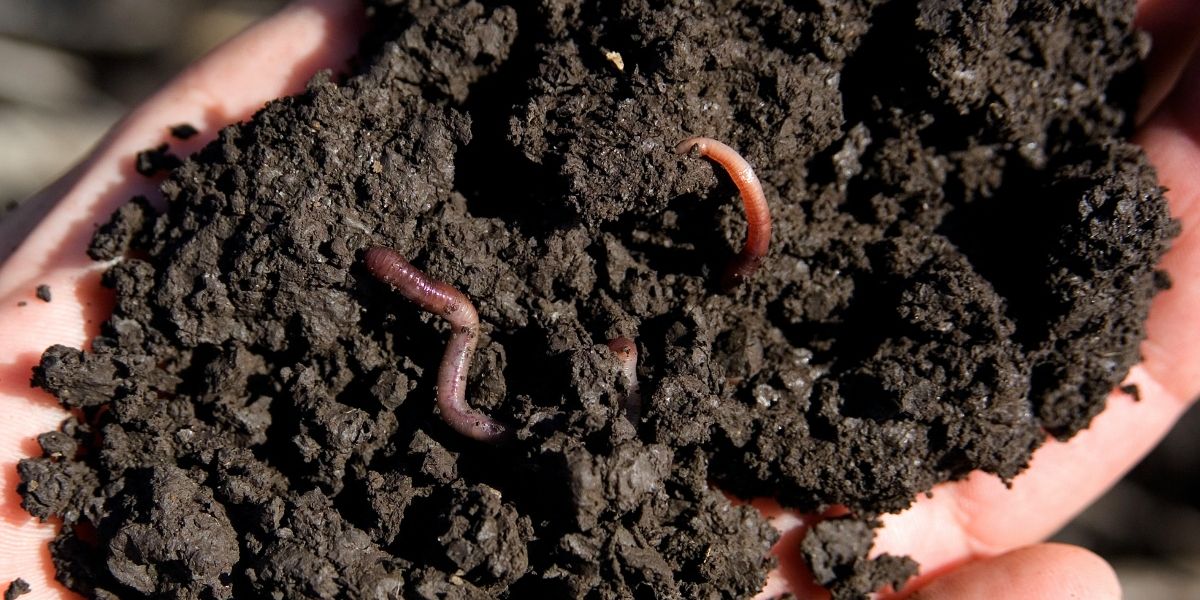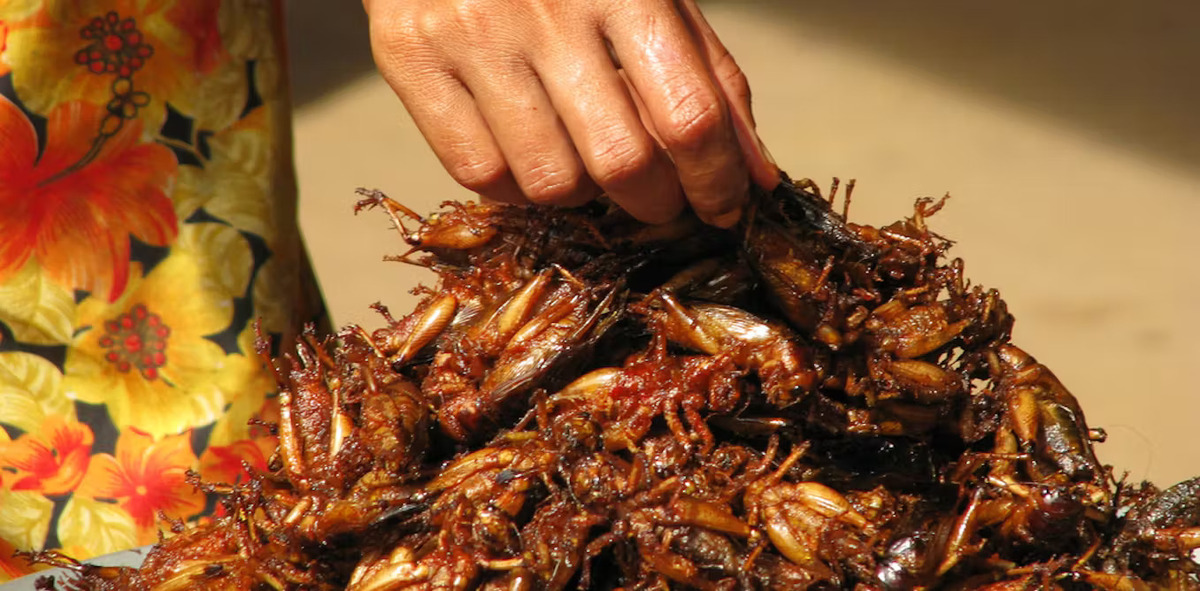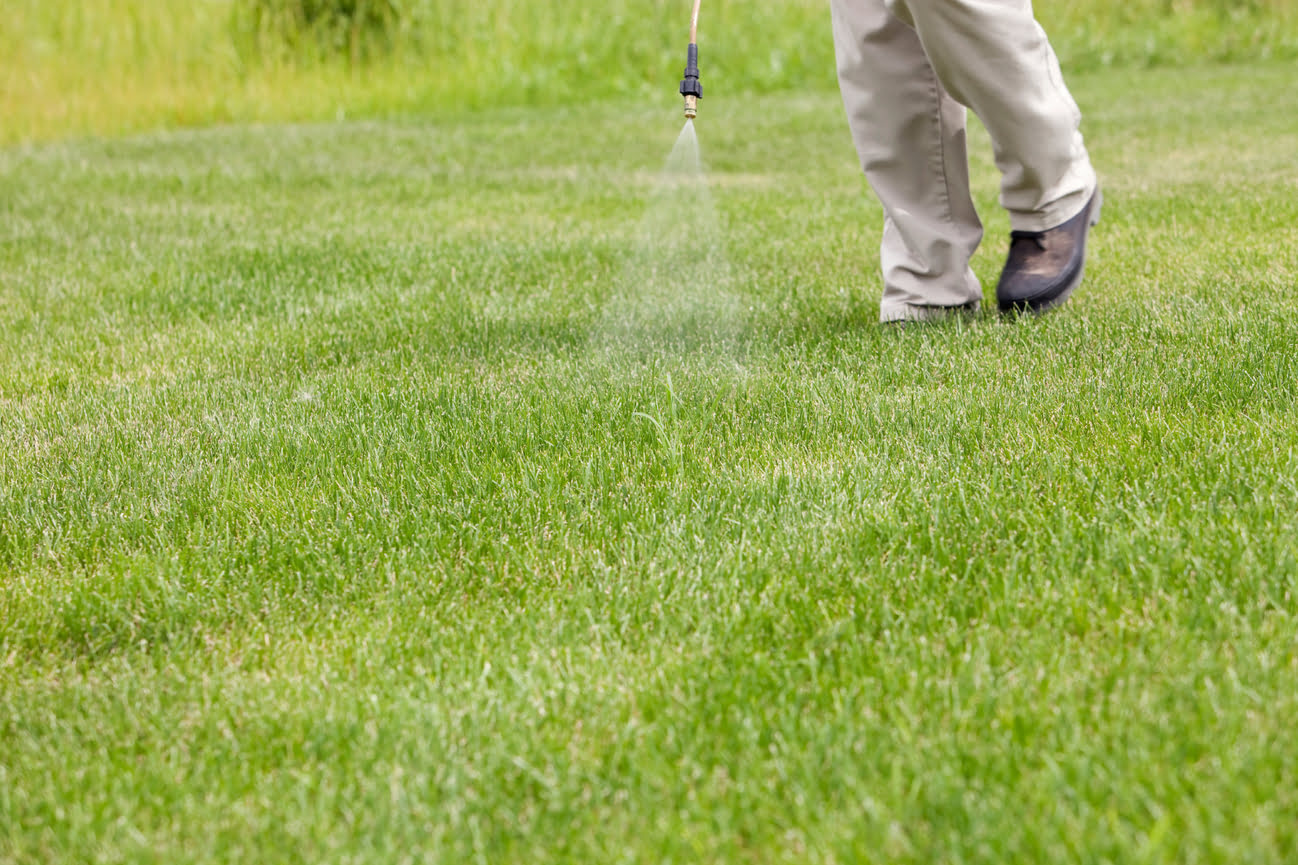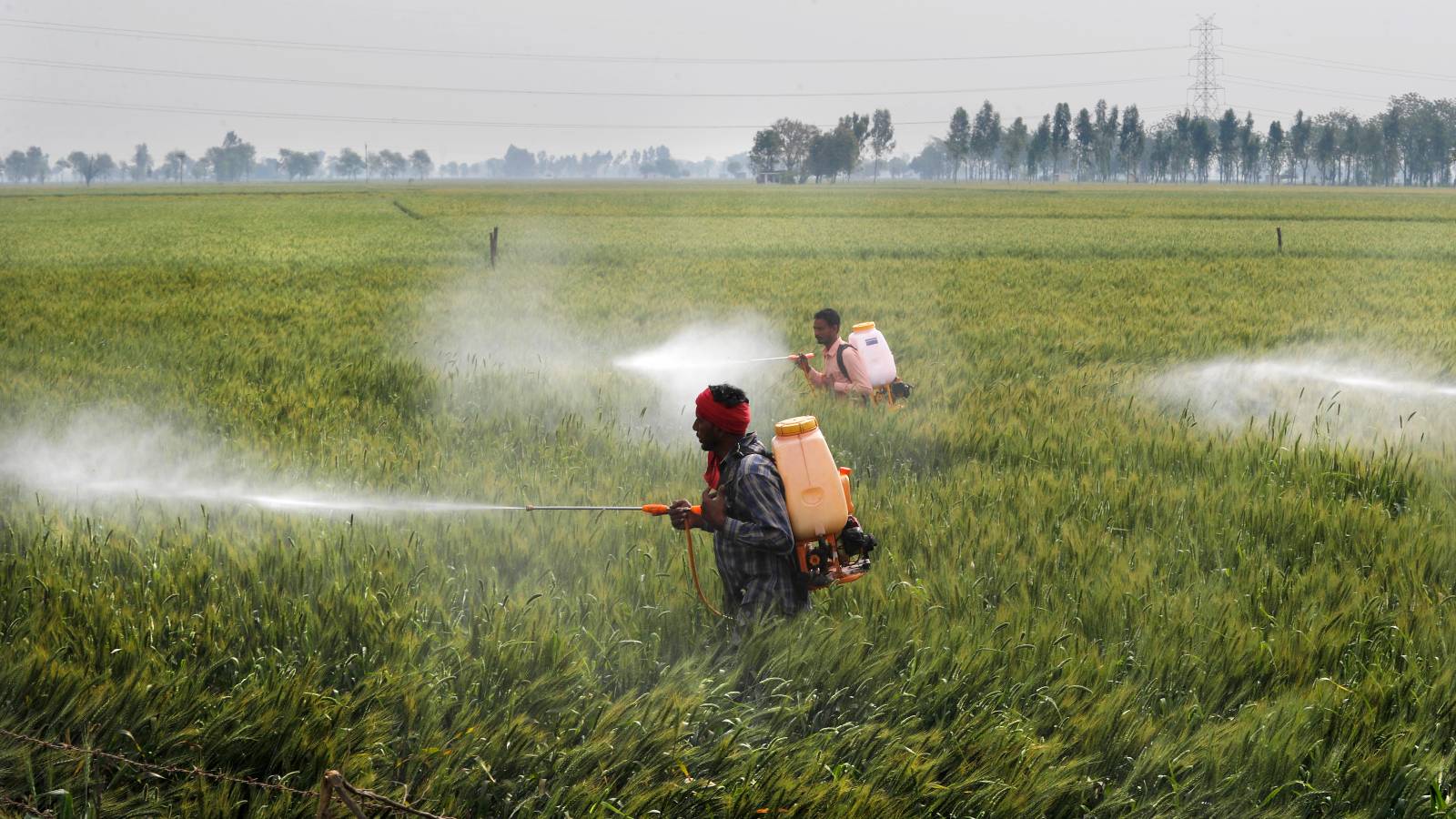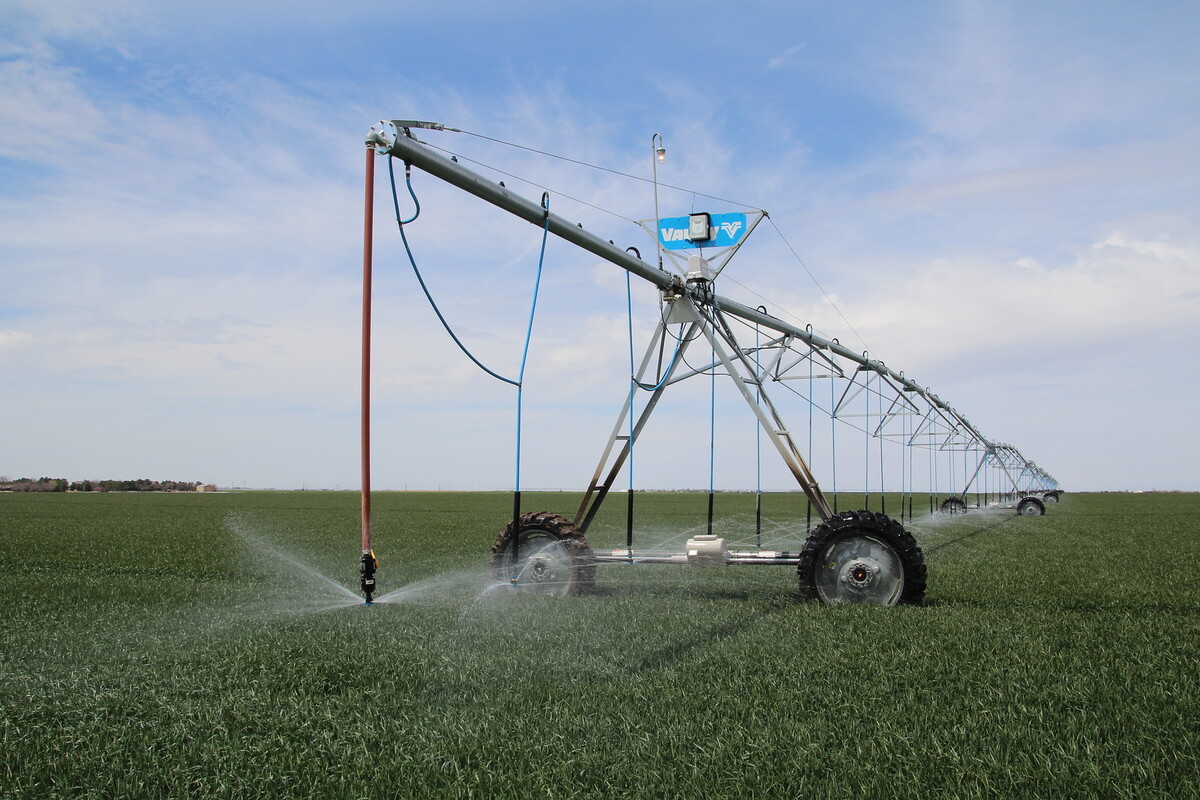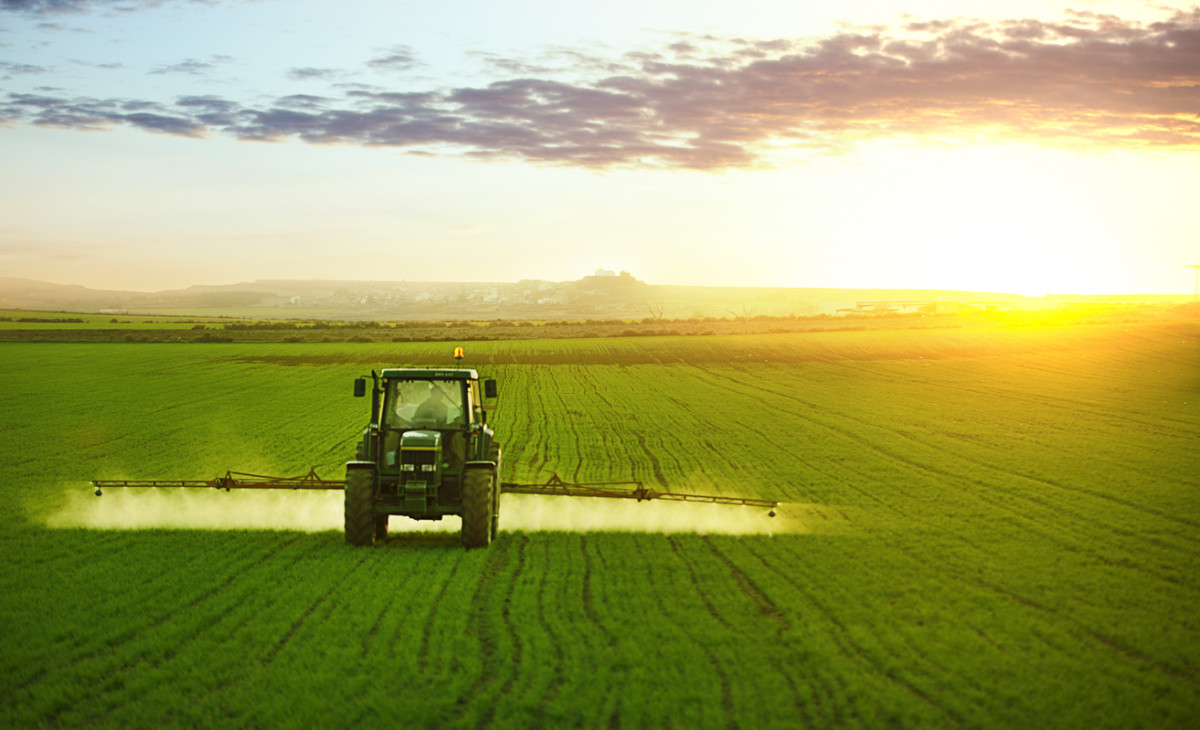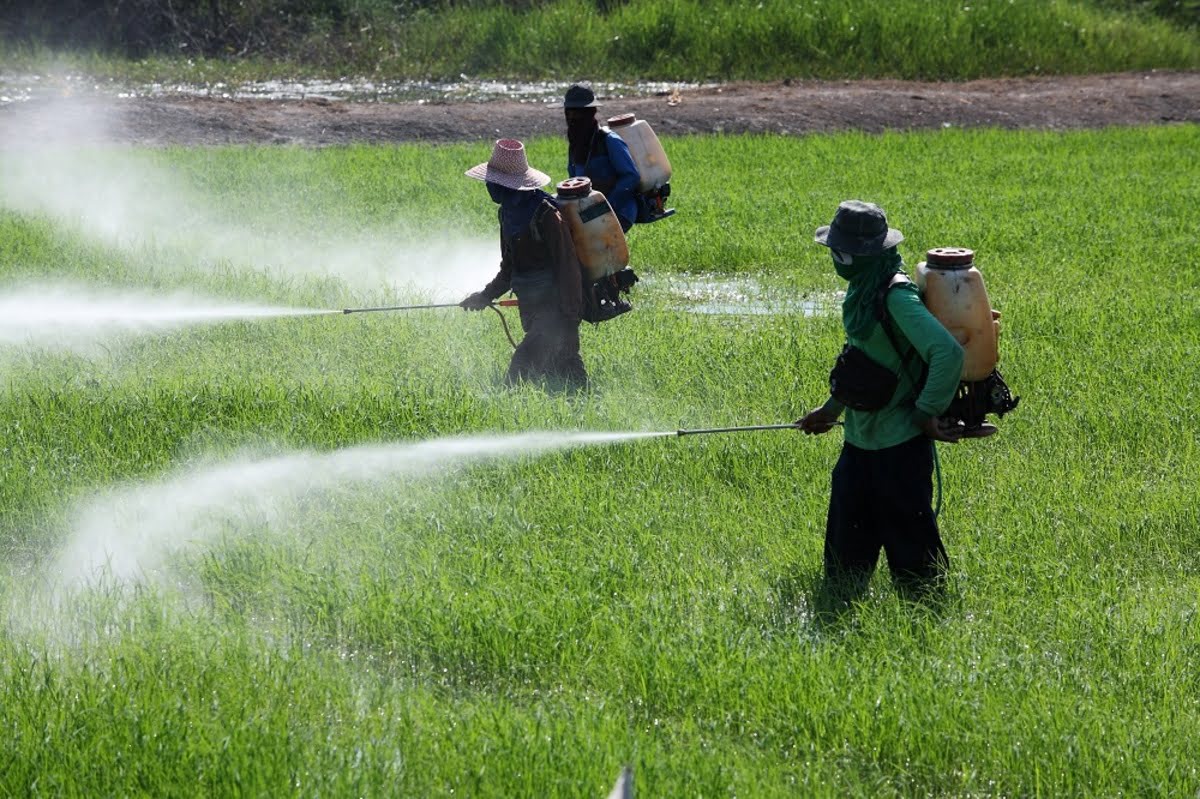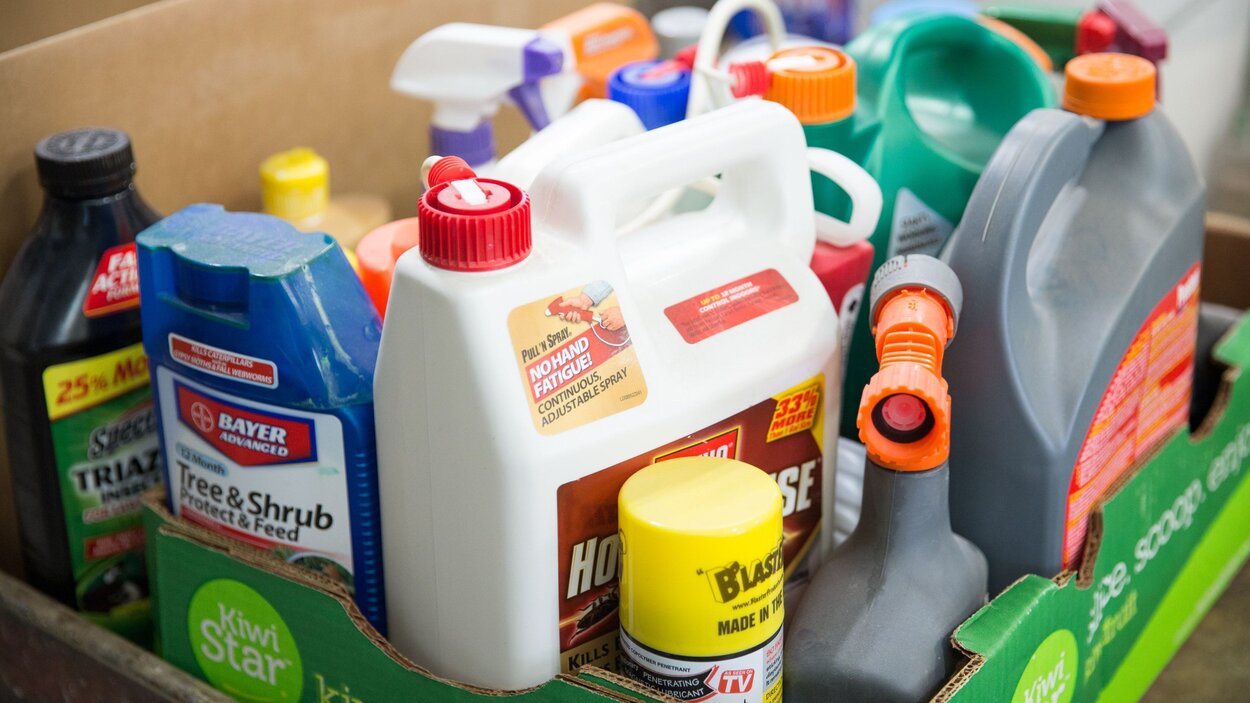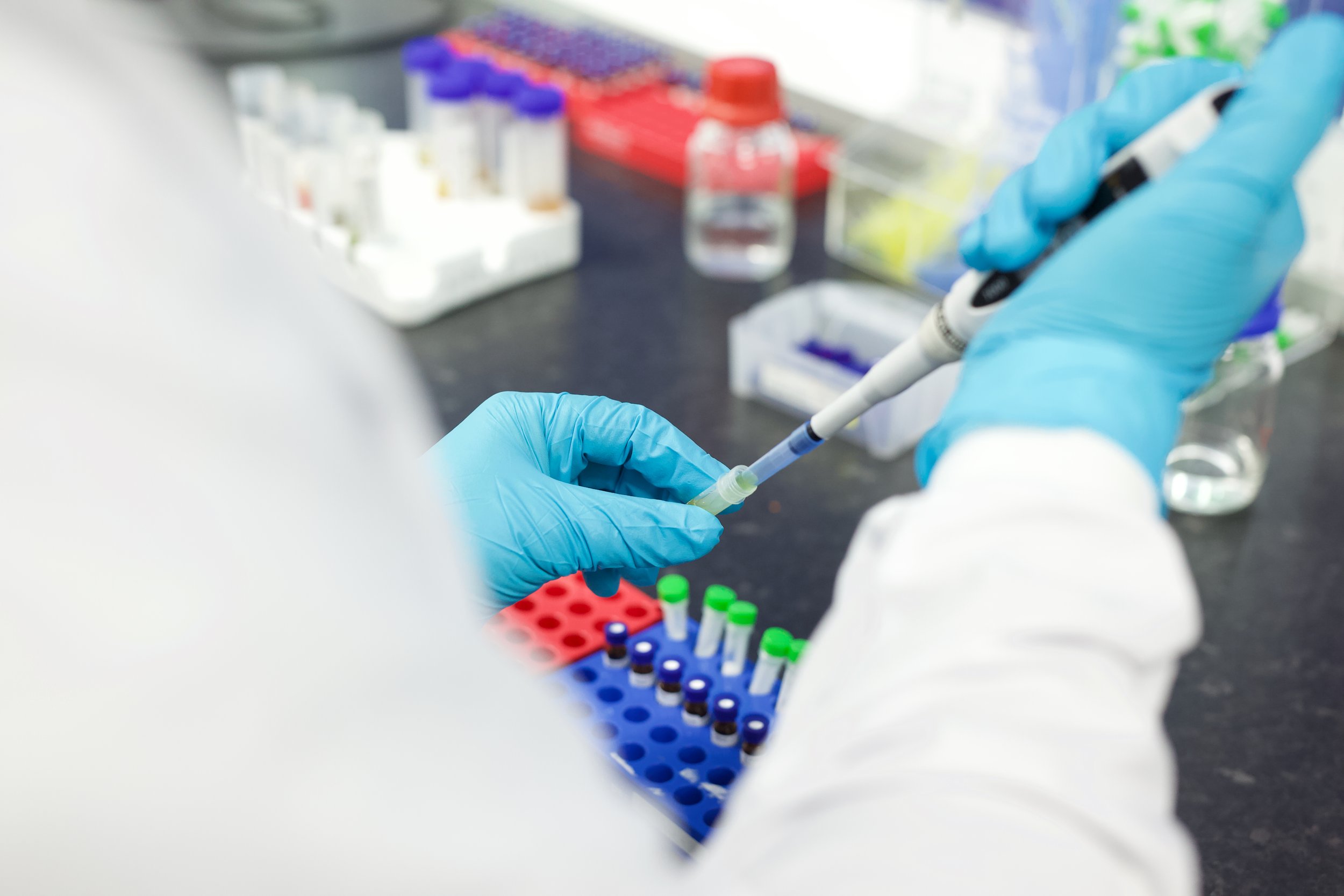Home>Gardening News and Trends>Latest News>How Do Pesticides Affect The Environment
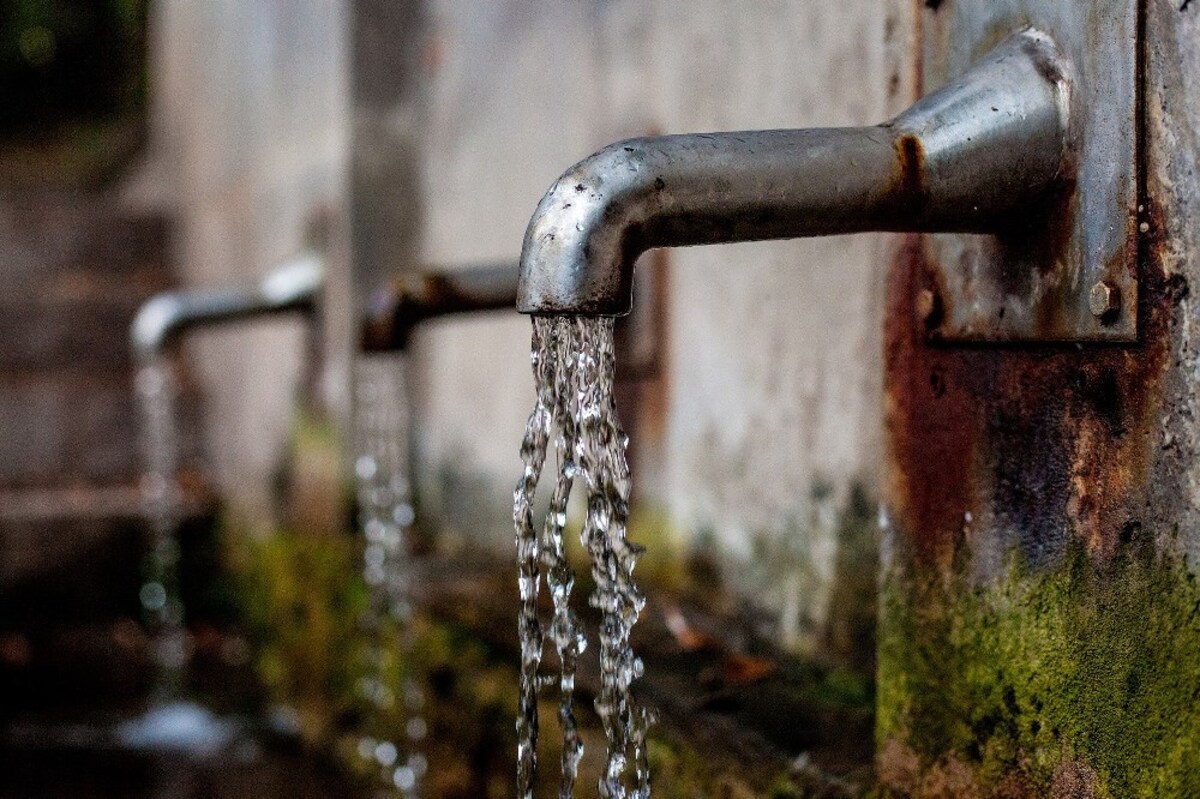

Latest News
How Do Pesticides Affect The Environment
Modified: February 10, 2024
Stay up-to-date with the latest news on how pesticides affect the environment. Learn about the impact and find ways to minimize harm.
(Many of the links in this article redirect to a specific reviewed product. Your purchase of these products through affiliate links helps to generate commission for Chicagolandgardening.com, at no extra cost. Learn more)
Table of Contents
Introduction
Pesticides play a crucial role in our efforts to protect crops and control pests that can harm both humans and the environment. These chemical substances are designed to kill or repel insects, weeds, and other organisms that can cause significant damage to agricultural yields. However, the use of pesticides comes with a host of unintended consequences for the environment, raising concerns about the long-term sustainability of our agricultural practices.
Understanding the environmental impacts of pesticides is essential for finding sustainable solutions that strike a balance between protecting crops and minimizing harm to the ecosystem. In this article, we will explore the diverse ways in which pesticides affect the environment, ranging from soil contamination and water pollution to the loss of biodiversity. By delving into the potential risks associated with pesticide use, we can identify strategies to mitigate their environmental impact effectively.
It is important to note that while pesticides provide valuable benefits, their use should be approached with caution. Adopting eco-friendly alternatives and implementing best management practices can help minimize the adverse effects on the environment without compromising the effectiveness of pest control.
Now, let’s dive into the intricate web of pesticide impacts, beginning with an understanding of what pesticides are and how they work.
Understanding Pesticides
Pesticides are chemical substances specifically formulated to control, repel, or kill pests that can cause damage to crops, livestock, or human health. They are classified into different categories based on their targeted organisms, such as insecticides for insects, herbicides for weeds, fungicides for fungi, and rodenticides for rodents.
These chemicals work by interrupting the normal physiological processes of the target organisms, either directly by causing toxicity or indirectly by disrupting their reproductive or feeding habits. Pesticides come in various forms, including sprays, dusts, granules, and baits, and can be applied through aerial spraying, ground application, or seed treatments.
Pesticides provide a valuable tool for farmers and gardeners to protect their crops from pests and ensure optimal yields. They help control disease-carrying insects, weed infestations, and crop-damaging pests, ultimately contributing to global food security.
However, it is crucial to understand that pesticides are designed to be toxic to living organisms. While they target specific pests, they can also harm non-target organisms and ecosystems if not used properly. Therefore, it is vital to strike a balance between the benefits of using pesticides and the potential risks they pose to the environment.
Regulatory bodies around the world establish guidelines and standards for pesticide use, including maximum residue limits for food products, to minimize human exposure and environmental impact. It is essential for farmers, pesticide applicators, and consumers to follow these regulations and use pesticides responsibly.
Now that we have a basic understanding of pesticides, let’s explore the various ways in which their use can impact the environment.
The Impacts of Pesticides on the Environment
The use of pesticides can have profound effects on the environment, posing risks to various ecosystems and organisms. These impacts can be seen in different aspects, including soil contamination, water pollution, loss of biodiversity, and even human health concerns.
One primary concern is soil contamination. Pesticides can persist in the soil for extended periods, particularly those with long half-lives. Continuous use of pesticides can lead to the accumulation of these chemicals in the soil, causing soil degradation and disrupting the natural balance of microorganisms that contribute to soil fertility. This can result in decreased nutrient availability, decreased biodiversity, and compromised ecosystem health.
Water pollution is another significant consequence of pesticide use. When pesticides are sprayed or applied to crops, they can be carried away by runoff or leach into groundwater sources. This contamination of water bodies can have detrimental effects on aquatic ecosystems, leading to the death of aquatic organisms like fish, amphibians, and invertebrates. Additionally, pesticide residues in water sources can contaminate drinking water supplies, posing potential health risks to humans and wildlife.
Furthermore, pesticides can also have negative impacts on biodiversity. These chemicals often do not discriminate between pests and beneficial organisms. Therefore, they can harm pollinators like bees, butterflies, and other insects that play a crucial role in the fertilization of plants. The reduction in pollinator populations can have severe consequences for the reproduction of many plant species, leading to a decline in plant diversity and ecosystem stability.
Not only do pesticides pose risks to the environment, but they can also have direct health implications for humans. Prolonged or excessive exposure to pesticides can lead to acute or chronic health effects, including respiratory problems, skin irritations, neurological disorders, and even an increased risk of certain types of cancer. This highlights the importance of using pesticides judiciously and ensuring proper safety measures are followed to protect both the environment and human well-being.
As we have seen, the impacts of pesticides on the environment are multifaceted and can have far-reaching consequences. It is imperative to adopt strategies that minimize environmental harm while still effectively protecting crops and managing pests.
Soil Contamination
Pesticide use can result in soil contamination, which is a significant environmental concern. Pesticides can accumulate in the soil over time, especially those with long durations of action and low degradation rates. This accumulation can lead to detrimental effects on soil health and the organisms that depend on it.
One of the primary ways pesticides contaminate the soil is through runoff. When pesticides are sprayed onto crops, excess chemicals may not adhere to the plants and can be carried away by rainfall or irrigation water. This runoff can transport pesticides into nearby soil, where they can infiltrate and accumulate.
Another pathway of soil contamination is through leaching. Leaching occurs when pesticides move through the soil profile and reach the groundwater. This process can happen when pesticides are applied in excessive amounts or when they are used on crops with shallow root systems that cannot absorb all the applied chemicals.
The impacts of soil contamination can be far-reaching. Pesticides can disrupt the balance of microorganisms in the soil, reducing their numbers and diversity. These microorganisms play essential roles in nutrient cycling, organic matter decomposition, and overall soil fertility. Therefore, the decline in microorganism populations can negatively affect soil health and the productivity of agricultural systems.
Furthermore, soil contamination with pesticides can also have indirect effects on plant health. Some pesticides may be taken up by plants, resulting in systemic toxicity. This can lead to reduced crop yields, stunted growth, and even plant death. Additionally, pesticide residues in the soil can contaminate the crops themselves, potentially posing a risk to human health when consumed.
To mitigate soil contamination, implementing best management practices is crucial. Integrated Pest Management (IPM) approaches, which emphasize a combination of preventative measures, cultural practices, biological controls, and judicious pesticide use, can help minimize the impacts of pesticides on the soil.
Using organic farming methods, such as crop rotation, cover cropping, and the use of natural pest control methods, can also reduce reliance on chemical pesticides and promote soil health. These practices support the growth of beneficial organisms in the soil, improving biodiversity and enhancing the natural resilience of agroecosystems.
Overall, minimizing soil contamination is vital for the long-term sustainability of agricultural practices. By adopting environmentally-friendly approaches and regulatory measures, we can reduce the adverse effects of pesticides on soil health and ensure the preservation of productive and environmentally sustainable agricultural systems.
Water Pollution
Pesticide use contributes significantly to water pollution, posing a serious threat to aquatic ecosystems and the organisms that depend on them. When pesticides are applied to crops, they can be washed away by rainfall or irrigation water, leading to contamination of nearby water bodies such as rivers, streams, lakes, and even groundwater sources.
One of the main ways pesticides enter water bodies is through runoff. When pesticides are sprayed on fields, excess chemicals can be carried away by surface water runoff, especially during heavy rainfall events. These pesticides are then transported to nearby water bodies, where they can accumulate and persist for extended periods.
Leaching is another pathway for pesticides to contaminate groundwater sources. Pesticides that are not retained in the soil can move downward through the soil profile and reach the groundwater, potentially impacting drinking water sources. This contamination can pose health risks to humans and wildlife that rely on these water sources.
The effects of pesticide pollution on aquatic ecosystems can be devastating. Pesticides can be toxic to a variety of aquatic organisms, including fish, amphibians, invertebrates, and algae. These chemicals can interfere with the reproductive systems, impair the immune function, and disrupt the normal behavior of aquatic organisms. In severe cases, pesticide pollution can lead to fish kills and the collapse of entire aquatic food chains.
The long-term consequences of water pollution extend beyond immediate toxicity to aquatic organisms. Pesticides can also persist in the environment and accumulate in sediments, posing a continued threat to aquatic life. This persistence can result in the bioaccumulation of pesticides in higher trophic levels, meaning that predators at the top of the food chain, such as birds and mammals, can be exposed to higher concentrations of these chemicals.
To mitigate water pollution caused by pesticides, implementing proper management practices is crucial. Buffer zones, which are vegetated strips of land along water bodies, can help trap and filter out pesticides before they reach the water. Utilizing precision agriculture techniques such as targeted spraying and reduced application rates can also minimize pesticide runoff and leaching.
Additionally, promoting the adoption of integrated pest management (IPM) approaches can help reduce pesticide use and reliance. By integrating various pest control methods such as biological controls, cultural practices, and resistant crop varieties, farmers can effectively manage pests while minimizing the environmental impacts of pesticides on water bodies.
Overall, preventing water pollution caused by pesticides requires a collaborative effort between farmers, regulatory agencies, and consumers. By implementing responsible pesticide use practices and adopting alternative pest control methods, we can protect the integrity of freshwater ecosystems and ensure the availability of clean water for future generations.
Effects on Biodiversity
Pesticide use can have significant impacts on biodiversity, leading to the loss of species and disruption of ecological balance. While pesticides are designed to target specific pests, they can also harm non-target organisms, including beneficial insects, birds, mammals, and even plants.
One of the most concerning impacts on biodiversity is the harm done to pollinators. Many pesticides, particularly insecticides, can be toxic to bees, butterflies, and other pollinators. These pollinators play a crucial role in the fertilization of plants, enabling fruit and seed production. The decline in pollinator populations can lead to reduced crop yields and diminished plant diversity, as many plant species rely on these pollinators for reproduction.
Pesticide use can also disrupt the natural predator-prey relationships in ecosystems. For example, when insecticides are used to control pests, they can inadvertently harm beneficial insects that prey on these pests. This disruption can lead to an increase in pest populations, creating a cycle of dependence on pesticides and further compromising ecosystem balance.
Furthermore, the loss of biodiversity caused by pesticide use can have cascading effects throughout the food chain. As populations of certain species decline, it can disrupt the flow of energy and nutrients, leading to imbalances in the ecosystem. This can negatively impact other organisms, including predators, resulting in further species decline and potential ecosystem collapse.
In addition to direct harm, pesticide use can indirectly impact biodiversity by degrading habitats. The use of pesticides can result in the contamination of soils and water bodies, leading to a decrease in the quality of these habitats. Many organisms depend on healthy ecosystems for food, shelter, and breeding sites. Therefore, the degradation of habitats due to pesticide pollution can have far-reaching consequences on biodiversity.
Protecting biodiversity requires a holistic and integrated approach. Integrated Pest Management (IPM) practices, which emphasize reducing pesticide use and incorporating a range of pest control methods, can help mitigate the negative impacts on biodiversity. This approach includes promoting natural pest controls, such as biological agents like beneficial insects and birds, implementing crop rotation, and utilizing resistant crop varieties.
Conservation efforts aimed at preserving and restoring habitats are also essential for safeguarding biodiversity. By preserving natural areas, creating wildlife corridors, and promoting the use of native plants, we can provide crucial habitats for a wide range of species and support healthy ecosystems.
Overall, it is vital to recognize the interconnectedness of species and ecosystems and to minimize the impacts of pesticide use on biodiversity. By adopting environmentally friendly practices and supporting conservation initiatives, we can protect the delicate balance of life on our planet.
Health Concerns
Pesticide use raises legitimate concerns about potential health risks to humans and animals. While pesticides are designed to target and control pests, they can also pose risks to those who come into contact with them, including farmers, farm workers, consumers, and even household pets.
Exposure to pesticides can occur through various pathways, including inhalation, skin contact, and ingestion. Prolonged or excessive exposure to pesticides can lead to acute or chronic health effects, depending on the type of pesticide and the level of exposure.
One of the primary health concerns associated with pesticides is respiratory problems. Inhalation of pesticide sprays or dusts can irritate the respiratory system and cause respiratory distress, such as coughing, wheezing, and difficulty breathing. Pesticide applicators and individuals working in fields treated with pesticides are particularly vulnerable to these respiratory issues.
Skin contact with pesticides can also lead to adverse health effects. Pesticides can irritate the skin and cause dermatological reactions, such as rash, redness, itching, or even chemical burns. Absorption of pesticides through the skin can result in systemic toxicity, affecting various organs and body systems.
Furthermore, certain pesticides have been linked to neurological disorders. Prolonged or repeated exposure to certain types of pesticides, such as organophosphates and carbamates, can affect the central nervous system and potentially lead to neurodevelopmental disorders, cognitive impairments, and even neurodegenerative diseases.
Studies have also suggested a potential link between pesticide exposure and certain types of cancer. Prolonged or chronic exposure to certain pesticides, known as carcinogens, has been associated with an increased risk of developing cancer, including leukemia, lymphoma, and various types of solid tumors.
To minimize health risks, it is crucial to use pesticides responsibly and follow safety guidelines. This includes wearing appropriate protective clothing, such as gloves, masks, and goggles, when handling or applying pesticides. Employers should provide adequate training and information about the safe handling of pesticides to workers to ensure their well-being.
Consumer awareness is also essential to reduce pesticide exposure. Washing fruits and vegetables thoroughly before consumption can help remove pesticide residues on their surfaces. Prioritizing organic produce or foods grown through sustainable farming practices can also reduce the risk of pesticide exposure.
Regulatory bodies play a vital role in ensuring the safety of pesticide use. Establishing maximum residue limits for pesticides in food products helps protect consumers from excessive pesticide exposure. Additionally, stringent regulations and monitoring systems can help mitigate potential risks associated with pesticide use.
Overall, it is crucial to prioritize human health and take necessary precautions when using pesticides. By adopting safer alternatives, implementing proper handling and application practices, and raising awareness about the potential risks, we can ensure the well-being of both humans and animals in environments where pesticides are used.
Strategies for Minimizing Environmental Impact
To mitigate and minimize the environmental impact of pesticide use, several strategies and approaches can be implemented. These initiatives aim to reduce chemical dependency, promote sustainable agricultural practices, and protect the health of ecosystems.
1. Integrated Pest Management (IPM): IPM is an approach that aims to manage pests by considering all available control methods and integrating them in a way that minimizes the use of chemical pesticides. This involves monitoring pest populations, implementing preventive measures, utilizing biological controls and cultural practices, and only resorting to chemical pesticides when necessary. By using IPM, farmers can effectively manage pests while minimizing negative effects on the environment.
2. Organic Farming: Organic farming relies on natural methods and avoids the use of synthetic chemical pesticides. Instead, it focuses on building healthy soil, promoting biodiversity, and using techniques like crop rotation, cover cropping, and biological pest control. Organic farming practices help reduce the overall environmental impact of agriculture and promote sustainable farming systems that work in harmony with nature.
3. Targeted Spraying: By using targeted spraying techniques, such as spot spraying or precision agriculture, pesticide application can be focused on specific areas or pests, reducing overall pesticide use. This approach minimizes exposure to non-target organisms and helps prevent unnecessary contamination of soil and water resources.
4. Safe Handling and Storage: Proper handling, storage, and disposal of pesticides are crucial to minimize environmental contamination. Following manufacturer instructions, using personal protective equipment, and securely storing pesticides can help prevent leaks, spills, and accidental exposure. Additionally, proper disposal methods, such as recycling or participating in community hazardous waste collection programs, should be followed to ensure pesticides are safely removed from the environment.
5. Buffer Zones and Riparian Areas: Establishing buffer zones and riparian areas along water bodies can help filter and capture pesticides before they reach the water. These vegetated strips act as barriers, reducing runoff and leaching, and promoting natural filtration and degradation of pesticide residues. Buffer zones can provide crucial habitats for beneficial insects, birds, and other wildlife, contributing to biodiversity conservation.
6. Education and Training: Providing farmers, pesticide applicators, and consumers with education and training programs can increase awareness about the potential impacts of pesticide use. Instruction on proper pesticide management, alternative pest control methods, and the importance of environmental stewardship can encourage responsible pesticide use and foster a culture of sustainability.
By implementing and integrating these strategies, we can minimize the environmental impact of pesticide use. It is essential to promote sustainable practices that protect ecosystems, preserve biodiversity, and safeguard the health of both humans and the environment.
Conclusion
Pesticides play a vital role in protecting crops and managing pests, but their use can have significant consequences for the environment. From soil contamination and water pollution to the loss of biodiversity and potential health concerns, the impacts of pesticides are diverse and far-reaching.
It is crucial to recognize the importance of finding a balance between the benefits of pesticide use and the potential risks they pose to the environment and human health. Implementing sustainable practices such as Integrated Pest Management (IPM) and organic farming can help minimize the environmental impact of pesticides while still effectively managing pests.
Strategies like targeted spraying, buffer zones, and safe handling and storage of pesticides also contribute to reducing contamination and mitigating the risks. Education and training programs further empower individuals to make informed decisions, adopt responsible pesticide use practices, and embrace alternative pest control methods.
Preserving and protecting the environment requires a collective effort from farmers, policymakers, regulatory bodies, consumers, and society as a whole. By advocating for sustainable farming practices, supporting conservation efforts, and promoting the use of eco-friendly alternatives, we can ensure the long-term health and sustainability of our ecosystems.
Moving forward, it is essential to continue research and innovation in the development of safer and more sustainable pest control methods. Embracing technological advancements and promoting the use of biological controls can further reduce reliance on chemical pesticides, enhance ecosystem resilience, and ensure a healthier and more balanced coexistence between agriculture and the environment.
By working together and adopting holistic approaches, we can minimize the environmental impact of pesticides while securing food production, protecting natural resources, and creating a more sustainable future for generations to come.
